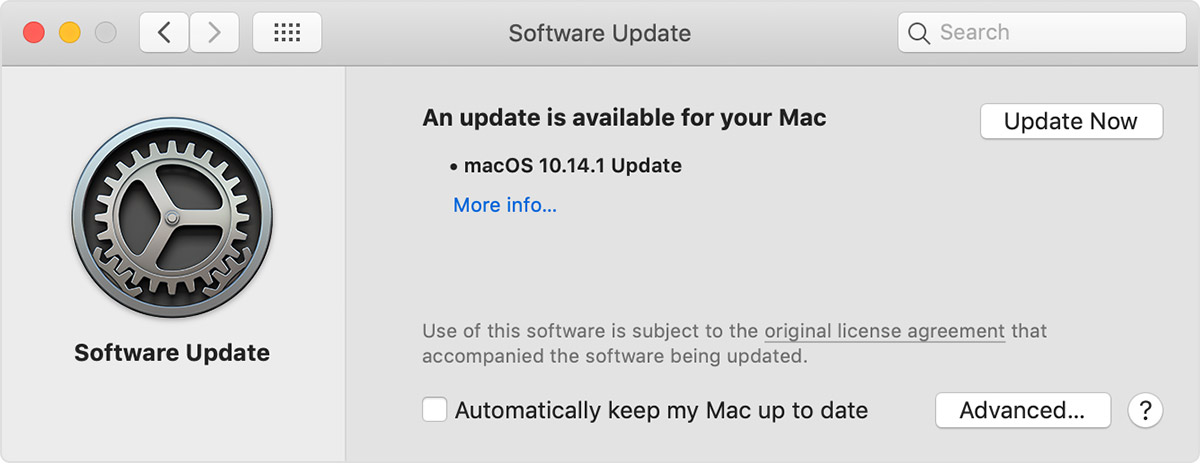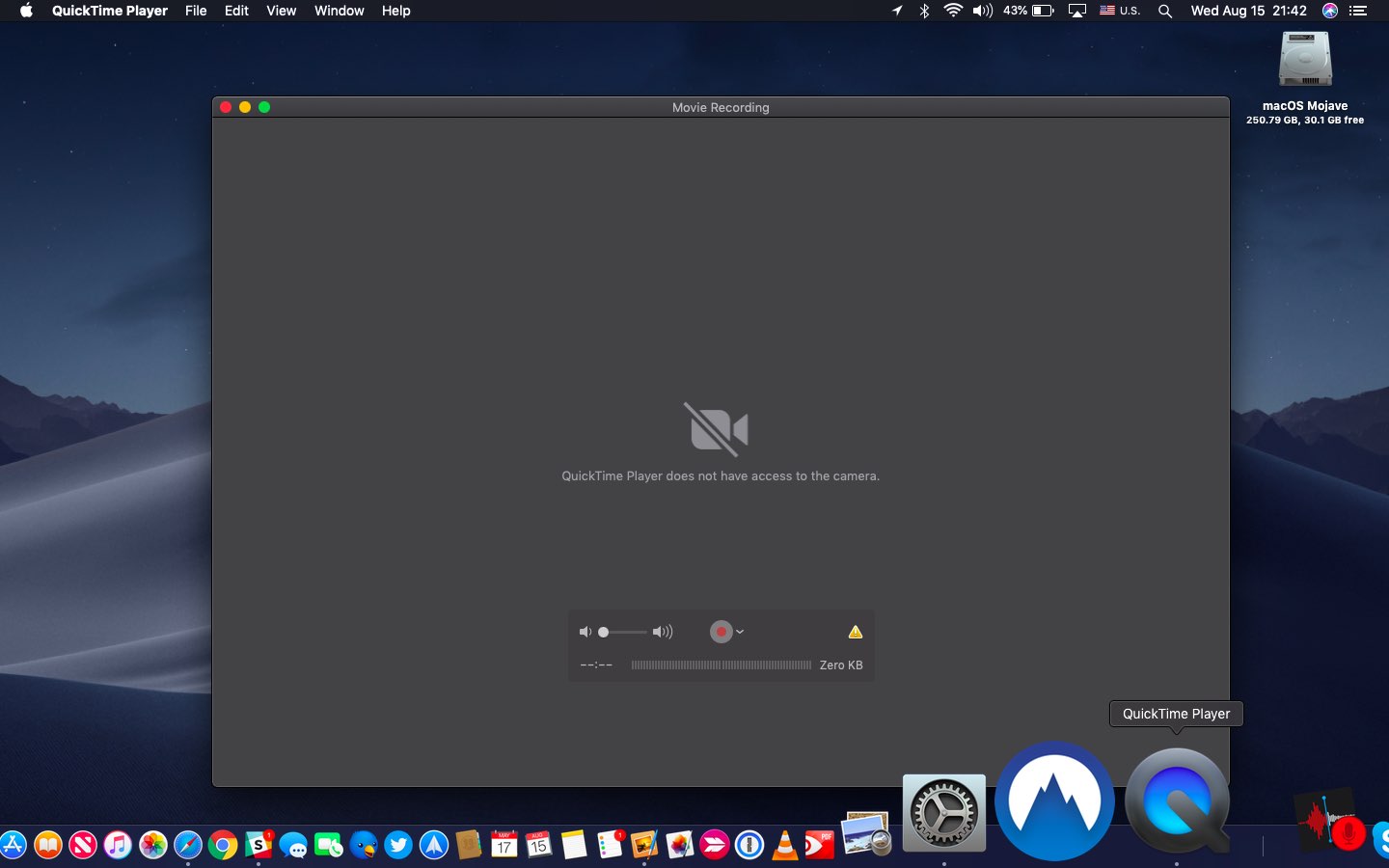What are disk permissions and why do they need repairing?
- How To Repair Disk Permissions On Mac - Make Tech Easier
- How To View All App Permissions On MacOS
- Permissions For The Events App With MacOS Mojave
- Macos Mojave How To Edit App Permissions Windows 10
- Macos Mojave How To Edit App Permissions Permanently
Enjoy the videos and music you love, upload original content, and share it all with friends, family, and the world on YouTube. Beginning with macOS 10.13 and for all subsequent macOS releases, Apple has been tightening the permissions granted to third-party applications, and requiring end users (you) to explicitly allow these applications access to things like the microphone, video camera, hard drive, and macOS accessibility services. Beginning with macOS 10.13 and for all subsequent macOS releases, Apple has been tightening the permissions granted to third-party applications, and requiring end users (you) to explicitly allow these applications access to things like the microphone, video camera, hard drive, and macOS accessibility services.
Disk permissions on macOS are used to keep your files secure. They’re designed so that certain programs (or other users if you share your Mac) can’t just dip into a system file they have no business with and modify it. They’d need permission to do that.
Every file and folder on your Mac comes with an associated set of permissions. From the Apple Community:
“Many things you install in Mac OS X are installed from package files (whose filename extension is '.pkg'). Each time something is installed from a package file, a 'Bill of Materials' file (whose filename extension is '.bom') is stored in the package's receipt file, which is kept in /Library/Receipts/ in Mac OS X v10.5 and earlier. These files don't take up much disk space and you shouldn't put them in the Trash. Each of those '.bom' files contains a list of the files installed by that package, and the proper permissions for each file.”
Unfortunately, these permissions can easily become messed up unintentionally. It’s quite common for this to happen when installing and uninstalling apps on your system. And when it does, apps can find themselves with free reign to alter files and modify read-only files which can cause all kinds of permission errors and system issues such as lagging, freezing, or crashing.
If you notice anything out of the norm regarding system performance, the first thing you should do is troubleshoot those disk permissions.
Below we’ll show you two ways: the manual and the easy one. Choose the way that works best for you.
How to repair permissions on Mac: The manual way
If you’re running an older version of macOS, Disk Utility is the go-to tool for troubleshooting problems.
Why an older version?
Because as of macOS version 10.11 El Capitan, Disk Utility no longer comes with the option 'repair disk permissions'. Boooo!
Apple even removed the command line:
But there’s a method to the madness. macOS now comes with a feature called System Integrity Performance (SIP) which is designed to automatically repair file permissions during software updates and system changes. SIP works by restricting the root account so that it can’t do things like modify protected locations and processes such as /System and /usr. This should prevent malware from gaining root permissions and infecting your system files.
Anyway, back to using Disk Utility to repair disk permissions. If you’re running a pre-El Capitan version of macOS, follow these steps:
1. Press Command + Space to open Spotlight, type in “Disk Utility”, and hit Enter.
2. Select Macintosh HD from the left sidebar menu.
3. Click on the First Aid tab.
4. Click on Verify Disk Permissions. By taking this step, Disk Utility will work through your hard drive to detect broken or misbehaving permissions and list them for repair. This might take a few minutes but you can check the Show details box to keep an eye on its progress.
5. Click on Repair Disk Permissions and wait while Disk Utility runs through the identified permissions to fix them.
If disk permission issues have played such havoc that your Mac won’t boot correctly, it’s possible to access Disk Utility in Recovery Mode. Do this by holding Command + R during bootup.
If you’re installing a newer (or older) version of macOS on top of your existing operating system, Mac will perform a disk permission repair as a part of the installation so that you start from a clean slate.
How to repair disk permissions on Mac: The easy way
For users of macOS versions El Capitan and newer, the removal of Repair Disk Permissions means you have no troubleshooting solution to turn to in if your Mac is ailing.
Photos app on mac not updating. ICloud Photos gives you access to your entire Mac photo and video library from all your devices. You get 5GB of free storage in iCloud — and as your library grows, you have the option to choose a plan for up to 2TB. All your photos on all your devices. If you shoot a snapshot, slo-mo, or selfie on your iPhone, it’s automatically added to iCloud Photos — so it appears on your Mac, iOS and iPadOS devices, Apple TV, iCloud.com, and your PC.
But worry not, CleanMyMac X is the hero you need.
How To Repair Disk Permissions On Mac - Make Tech Easier
CleanMyMac is like Disk Utility in that it does all of the heavy lifting for you to verify permissions and repair your Mac’s disk.

Even System Integrity Performance running quietly in the background doesn’t prevent certain issues from arising. If you’re suffering from any of the following problems, boot up CleanMyMac and have it take care of business:
- Improper functioning of applications.
- Inability to move or delete files.
- Inability to access files.
How To View All App Permissions On MacOS
If you Mac appears to be running fine, it’s still worth running repairs every so often to ensure it stays that way. Not all broken permissions affect performance but that doesn’t mean they shouldn’t be fixed.
Repairing Disk Permissions in a few clicks
First things first, you’ll need to download CleanMyMac X. You can do that here. It’s free so you won’t need your credit card. Once that’s done, follow these five steps:
1. Launch CleanMyMac.
2. Click on Maintenance from the left sidebar menu.
3. Check the box next to Repair Disk Permissions.
4. Click Run.
CleanMyMac will scan your system to verify disk permissions and automatically repair permissions that are found to be faulty. When the task is complete, you’ll be able to view a log of all the permissions that were repaired.
And that’s all there is to it. Your Mac should now be running as intended.
Permissions For The Events App With MacOS Mojave

Disk permissions are critical to your system’s security and performance but only when they’re working as they should. Use CleanMyMac to verify and repair disk permissions whenever you run into issues with apps or files for a healthy running Mac.

Macos Mojave How To Edit App Permissions Windows 10
Enjoy a clean, happy Mac!
It’s better than great. Simple but deep, Acorn let’s me make quick work of every image that’s fit to print without spending the big bucks. You won’t find a better Calendar for your Mac than FlexiBits’ ($30, available on the ). Pc screenshot apps. Calendar: Fantastical 2Not even a question.